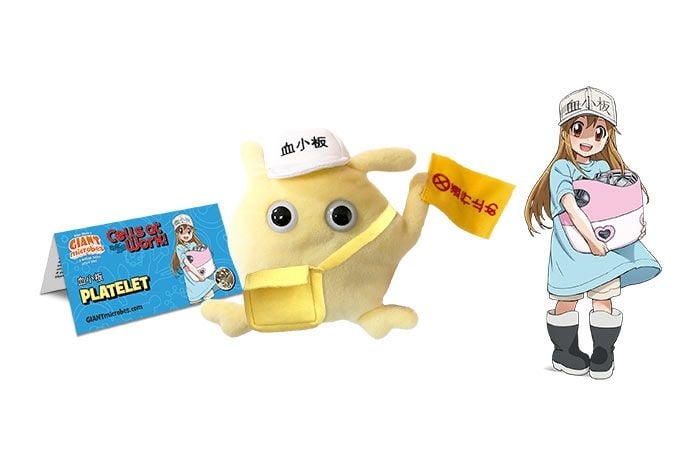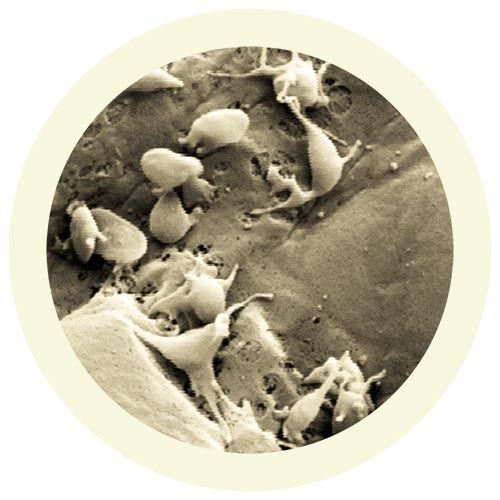Cells at Work! Platelet
Platelets often assemble in groups and support each other, bringing comfort and relief to the other cells in the body.
Watch the Cells at Work! anime trailer here: Cells at Work!
Copyright © Giantmicrobes, Inc.
©Akane Shimizu / KODANSHA, Aniplex, davidproduction
Product Details
Additional Information
| Sizes | Giantmicrobes are based on actual microbes, cells, organisms and other critters, only 1,000,000 times actual size! Gigantic (GG) 40-60cm XL (XL) 25-38cm Original (PD) 12-20cm Keychain (KC) 5-10cm with clip |
|---|---|
| Materials | Plush from all new materials. Stuffed with polyester fiber fill. Surface washable: sponge with water & soap, air dry. |
| Packaging | Each plush microbe includes a printed card with fun, educational and fascinating facts about the actual microbe or cell. |
| Safety | Every product meets or exceeds U.S. and European standards for safety. For ages 3 and up. |
All about Cells at Work! Platelet
FACTS: Platelets, or thrombocytes, are the smallest cells (or cell fragments) in the blood. Under the microscope, they normally look like little disks, or plates!
The primary purpose of platelets is to prevent bleeding by creating blood clots. As platelets circulate through the bloodstream, they normally slide along the smooth surface of the blood vessels without sticking. However, if the smooth wall is ruptured, platelets are activated: they swell up, stick to the exposed rough patch, and extend filaments which can help seal the breach.
The average person has between 150,000 to 400,000 platelets in every drop (or microliter) of blood. However, if platelet concentration falls to abnormally low levels (because platelet production in the bone marrow is insufficient, or because platelet absorption by the body is too rapid), the formation of blood clots can become impaired and bleeding can result. On the other hand, if platelet production is too rapid or absorption too slow, platelet levels can build into the millions per microliter, which can cause blood clots to form spontaneously, resulting in heart attacks and strokes. And even where platelet concentration is normal, platelets can become dysfunctional, because of hereditary conditions, disease, or the presence of platelet-altering substances such as aspirin in the body.
Fortunately, a variety of medical treatments can help restore platelet level and functionality. In addition, where necessary, platelet transfusions can also be performed – thanks to the many blood donors who keep stocking the cupboard.









